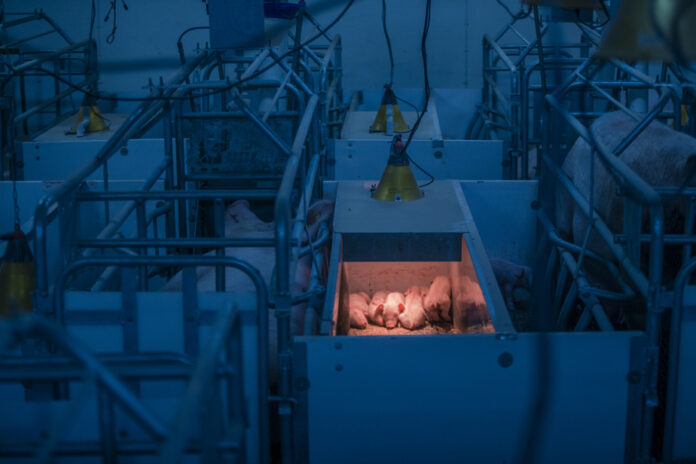In order to curb the crisis that is shaking the pork industry, nearly one in five breeders is ready to close at least one of their breeding buildings in exchange for compensation.
On August 7, the Régie des Marchés Agricoles et Alimentaires du Québec – an administrative tribunal – gave the green light to a voluntary program to withdraw from pork production for a period of five years. With a maximum envelope of 80 million, this collective redemption mechanism aims to significantly reduce the number of animals raised in the province.
According to figures provided by Les Éleveurs de porcs du Québec, 310 of the province’s 1,422 companies – or 22% – have indicated their intention to participate.
Already, 260 producers have applied. These barns are ready to cease production for five years or to close at least one facility when they have several.
“We think it’s high. It translates I wouldn’t say distress, but a difficult situation that producers are currently experiencing, that’s for sure, ”explains Benoit Désilets, deputy general manager of Pork Breeders, the agricultural union which is piloting the withdrawal program.
Closure of the Chinese market, COVID-19 pandemic, labor shortages, pork sold at a discount and other calamities: for the past few years, the industry has been rocked by a series of storms.
“It’s a tough decision to make because they’re producers at heart,” he adds.
Quebec produces 6.8 million fattening pigs annually. Announced in March, the program initially aimed to reduce the number by 1.1 million to match supply with the lower demand announced by slaughterhouses.
“Every year, there are producers who leave the sector. It’s just that there, in the background, we give a blow, we say: “If you were planning to leave in five years, then do it now.” So that those who remain can have space, ”says Mr. Désilets.
In April, the processor that slaughters 80% of the pigs in Quebec, Olymel, announced the closure of one of its four factories, that of Vallée-Jonction, in Beauce.
Since then, the reduction target of 1.1 million has been significantly reduced. The goal now is to reduce annual production by 640,000 animals.
For what ? Les Eleveurs de porcs respond that other players such as Aliments ASTA and CBCo Alliance have decided, in the meantime, to increase their slaughter capacity.
The Breeders estimate that in the end, the program (funded two-thirds by taxpayers and one-third by producers who have decided to stay) will cost less than 80 million.
The first competition (out of a maximum of three) aims first to reduce the Quebec herd by 3%, or 200,000 pigs and 8,000 sows.
For this first spin, Les Éleveurs de porcs received 260 submissions. The selected farms will be those that requested the lowest amount.
The exercise is complex, because the different truss models have to be tied together. Some farms raise pigs from A to Z, that is to say from the moment of insemination of the sow until the departure of the pigs for the slaughterhouse. Others, for example, focus only on births or fattening.
“We’re trying to land the plane softly. Because it’s not easy,” says Mr. Désilets.
A dozen selected farms had already been notified at the beginning of the week. Others will be contacted shortly.
The producer who was not selected will be able to maintain his submission in the second contest, but he will not be able to change it. However, he can withdraw it. New companies will have the right to bid. The Breeders will not reveal the number of farms selected and the sums granted before the end of the exercise.
“The producer may submit, for a company or a group of companies, one or more bids for a maximum total sum of $1.5 million”, can however be read in the decision rendered by the Régie.















